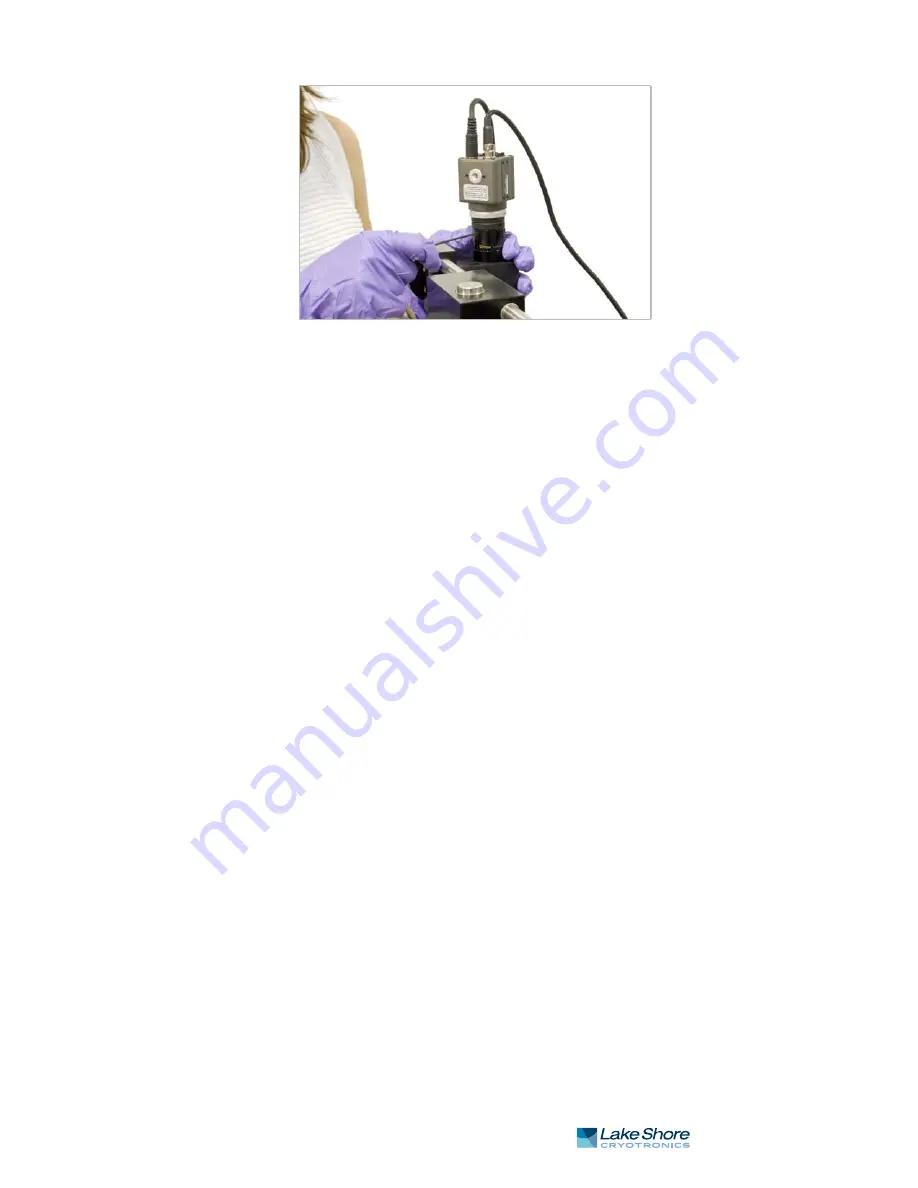
145
|
www.lakeshore.com
6.3.5 Probe
Troubleshooting
The three most common issues that arise with probes fall in three categories: bent or
broken probe tips, poor or non-ohmic electrical contact, or a loss of continuity.
6.3.5.1 Bent or Broken Probe Tips
Probe tips by nature are delicate and must be handled with care both inside and
outside the probe station. The following are ways that probe tips can be
broken or bent:
Landing:
landing probes is probably the most important step in achieving reliable,
repeatable electrical measurements. Too little contact pressure will result in unstable
measurements, but too much will damage probes. ZN50 probe tips damaged during
landing are often bent upwards. Carefully follow instructions in section 4.6.2 to
prevent probe damage. Develop and follow a protocol suitable for the combination of
probe type and pad material used in each application.
Failing to raise the probe tips:
the cautions throughout this manual instruct operators to
raise probe tips before cooling or warming the system, when applying vacuum, and
when moving probes in the x or y direction. Probes that are damaged when vacuum is
applied or while being moved when landed are generally the ones that are very
severely damaged. Probes damaged during temperature change often take on a
characteristic curled shape. Wait for the probe arm temperature to stabilize,
approximately 10 to 15 min after the radiation shield stage stabilizes, before landing
the probes.
Storing:
when probes are not being used, store them in their original packaging. This is
especially important for microwave probes, because the weight of the probe body will
cause damage to the tip if the probe is left loose.
Cleaning:
aggressive cleaning can easily damage probes. If more than periodic tarnish
removal for the BeCu ZN50 probes is necessary, it is recommended to gently clean the
probe tips under a microscope, working away from the probe body.
FIGURE 6-7
Loosening the camera rotating joint
to adjust the camera image orientation


























